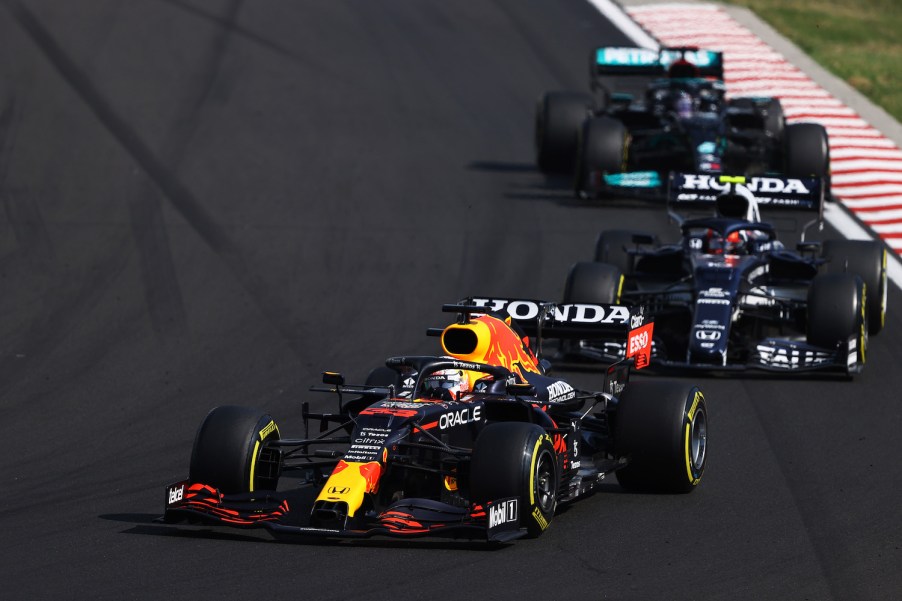
How Max Verstappen’s Aero Damage Slowed His Race
Sunday’s Formula 1 Hungarian Grand Prix kicked off to a rough start for Championship contender Max Verstappen. Valtteri Bottas who started in P2 hit the back of Lando Norris into the first corner, sending his McLaren into the side of Max Verstappen’s Red Bull. Verstappen lost a lot of downforce from the contact and struggled to finish in P10. Sebastian Vettel’s disqualification from P2 bumped Verstappen into P9. The damage to the Red Bull was detrimental, and couldn’t be wholly fixed in the pits.
What Broke on Max Verstappen’s Car?

An F1 car’s floor extends from the rear all the way past the side pods, just behind the front suspension. The contact with Bottas’ Mercedes took out a chunk of the floor in front of the right side pod. After the incident the race was red-flagged and the cars were sent back to the pits. Red Bull mended the barge boards as best as they could. For 70 laps Verstappen had difficulty with braking, understeer, and oversteer.
What Effect the Barge Boards Had on Max’s Car

Barge boards redirect airflow from the front wing, suspension, and wheels either away from the sidepods or into the radiator inlets. The boards do this with deflectors, which are little winglets that stick upright behind the front wheels along the floor. Winglets carry the vortices from the deflectors away from the floor and to the back of the car, according to Motorsport. This keeps the rear end planted.
Without the barge boards, the dirty air of the wing and tires gets under the car and reduces downforce. After Max’s accident, there was nothing on the right side of his car to redirect dirty air from the floor. This is detrimental to Verstappen’s season, as wings can decide championships.
How Does the Car Behave Without Downforce?

Without downforce, an F1 car is difficult to control effectively at high speeds. Downforce is a negative lift, meaning it’s pushing the car onto the track. When an F1 car loses downforce it becomes extremely sensitive to air underneath the floor and makes the car unstable.
Front wing damage is easy to fix. Front wings detach from the nose cone, and teams can bring extra front wings to each circuit. Unfortunately, tens of tiny winglets and flaps make up the barge board area. Designers meticulously place these parts to provide the best airflow, so teams cannot fix this part during a pit stop.
Red Bull F1 cars traditionally have high-downforce designs while sacrificing straight-line speed. It helped during the sprint qualifying at Silverstone, a relatively low-downforce circuit when the Red Bulls could exit corners much faster than the competition thanks to their ability to carry more speed through slow parts of the track. Without the turn-1 incident at the Hungaroring, Red Bull’s high-downforce cars could surely have benefitted from the track’s slower, more technical layout.


